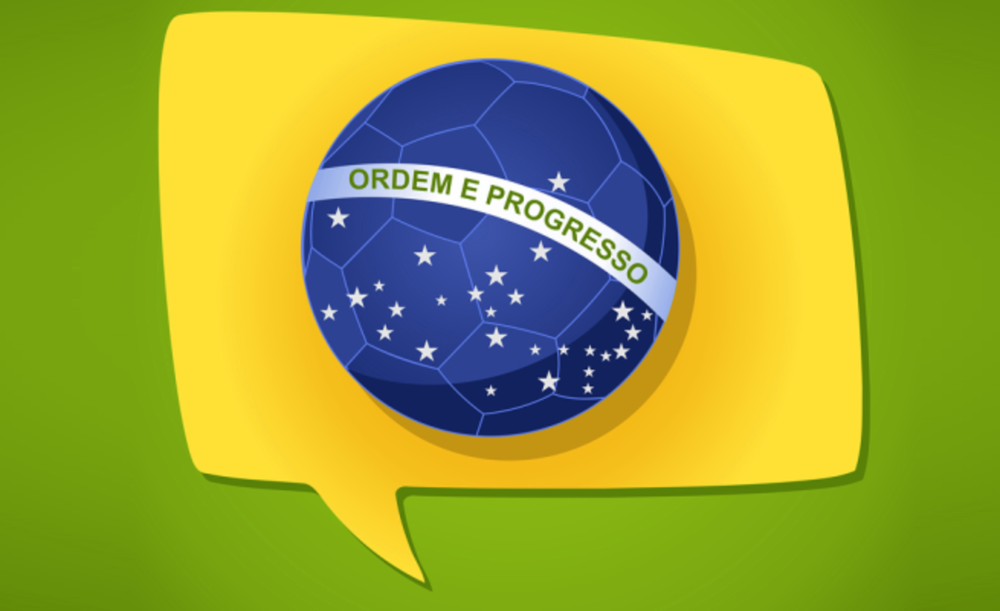Sochi who? Less than halfway through the games, the number of World Cup-related social interactions already trumped that of the Academy Awards, Olympics, and Super Bowl combined. So sayeth the Facebook, amen.
It’s not surprising, considering the international nature of the World Cup and the sky-high Facebook usage rate in Latin America. According to Brazil-based media and marketing company IMS, more than 97% of Latin America residents (those with an Internet connection) use social media, and the continent overall has 13% more Facebook users at 179 million than the U.S.’s 158 million. Not to mention the mobile adoption rate in LatAm, which eMarketer estimates saw a 45%+ increase in 2013.
Social media is a notorious leveler of the playing field (soccer reference!). A small brand can have as big a share-of-voice as, say Coca-Cola, if it knows how to use social right. So the question in my mind is why brands even both sponsoring big events like the World Cup. Seems it would be easier, and significantly cheaper, to hijack the opportunity on Twitter, Facebook, or wherever the audience happens to be.
According to research from GlobalWebIndex, 38% of consumers have no idea that non-sponsor brands like Nike, Pepsi, and others, who’ve been running full-on World Cup campaigns, aren’t, in fact, official sponsors. If a brand’s on social media, it can align itself with the World Cup as easily—and as vocally—as any other brand that’s shelled out millions on an official sponsorship.
Volkswagen’s a good example. Without spending a penny on sponsorship, VW and its agency Deutsch LA created 288 mini videos, each featuring a computer-generated VW Golf spinning around a soccer pitch while the animated crowd screams “GOOOOOOLF!” The videos were deployed one by one right beside ESPN.com’s live-streaming of the matches each time a team scored. The videos were even color-coded to match team colors. It’s designed to generate buzz, and that it’s doing.
That’s the best #worldcup ambush marketing I’ve seen so far. @Volkswagen ‘Gooooooooolf Celebration Videos’ on ESPN. http://t.co/ZEEHxXyOrc
— Seb Bardin (@digiseb) June 16, 2014
The social engagement potential at the World Cup truly is staggering. Social intelligence company NetBase created live dashboards (here’s one) to show all the social media activity swirling around the World Cup in real time, including mentions, impressions, emerging topics, sentiment, and a map detailing geographical hot spots. When I happened to check last week, the dashboard showed that there’d been roughly 11,700 tweets in a single hour, generating about 11 million impressions. In just one hour. #WorldCup2014 has been trending on Twitter basically since mid-June. It’s a social bonanza out there, and brands, sponsors or not, should be capitalizing on it.
I caught up with Craig Elimeliah, SVP and director of creative technology at RAPP, to talk social strategy and what brands can do to tap into the raw social power of events like the World Cup. Here are his top tips:
Hash it up. Hashtags, the really relevant ones, don’t just capture moments—they aggregate those moments and allow brands to organically (one would hope) piggyback on culturally relevant conversations as they’re happening.
“Brands are becoming more comfortable jumping on non-branded hashtags,” Elimeliah says. “As culture bubbles certain hashtags up into the mainstream, brands should take advantage of those moments and adopt those hashtags.”
A little context never killed anyone. The World Cup is a big social opportunity for brands—but only if they develop messaging that jibes with the zeitgeist.
“Brands should look to create reasons for people to share and provide rich context with a focus on what’s happening around the world and how people are talking about it,” he says. “It’s a chance to dial up the emotions and map them back to the brand pillar so that the brand can try and own certain moments—which in a way is ‘real-time marketing,’ but I’d rather call it ‘right-time marketing,’ because it’s about activating the right message at the right time based on what’s happening contextually.”
Look beyond the games themselves. The matches are a big deal, of course, but what’s happening off the field is just as important, at least culturally.
“Look at the periphery of what’s going on around the games and what you can do within the white space between games,” Elimeliah says. “Really track what’s going on so you can have the right people putting out the right communications at the right time to activate the right responses.”
But try not to be annoying. Realize that sometimes, fans just want to focus on the football. “Advertisers have to be wary about disruption and putting out too much,” he says. “Timing is important, so brands need to think about when and how it’s appropriate to reach out to audiences.”
And now I leave you with Elimeliah’s favorite piece of World Cup advertising, the Beats/Apple/Nike collaboration for “The Game Before the Game.” It’s got it all: emotion, good storytelling, context, a non-branded hashtag (#gamebeforethegame)—and none of the brands involved are official World Cup sponsors. Of course, athletes have since been banned from wearing their Beats by Dre headphones on the pitch because of FIFA’s official partnership with Sony; but that doesn’t stop the players from sporting their Beats at every other opportunity.








